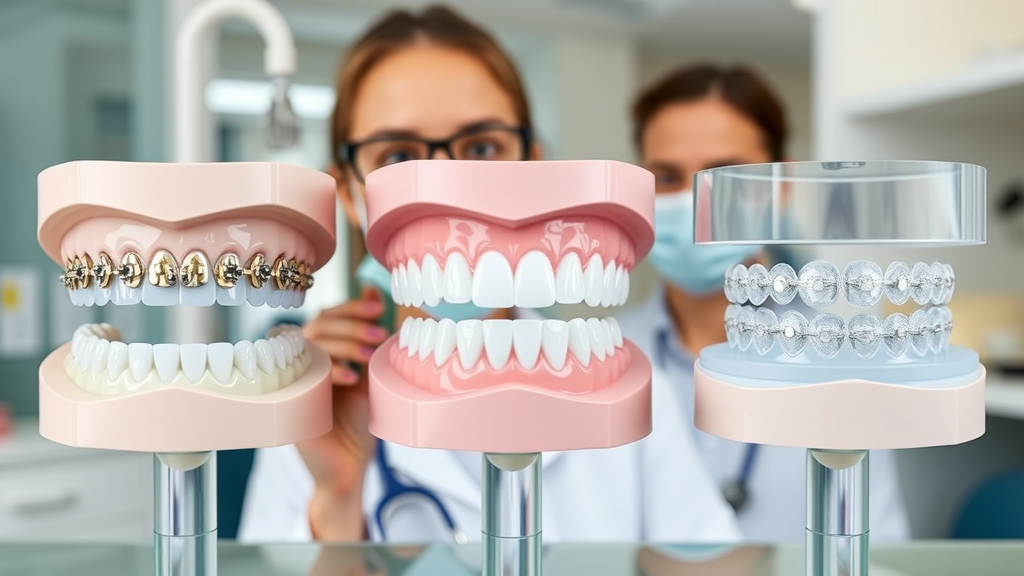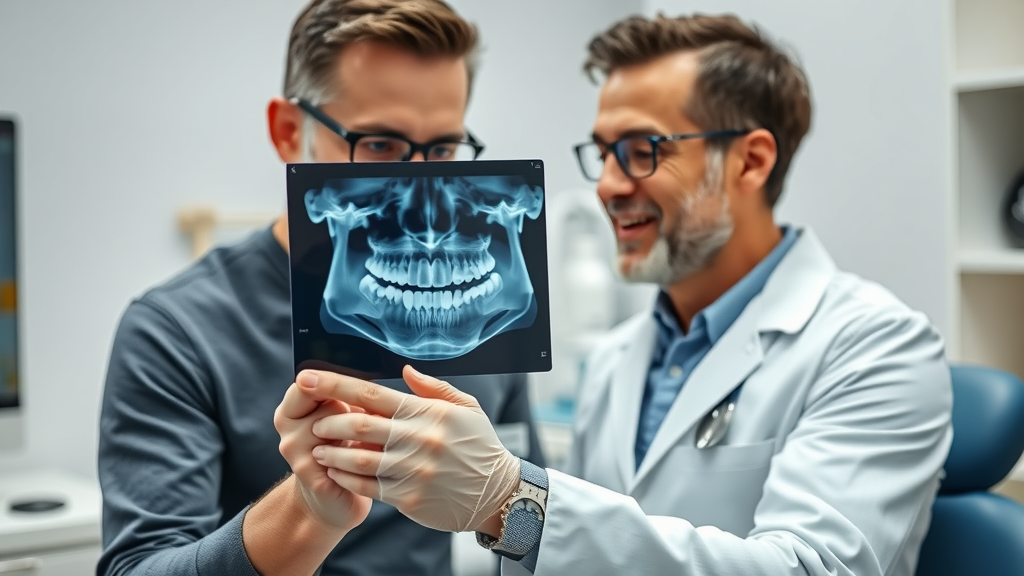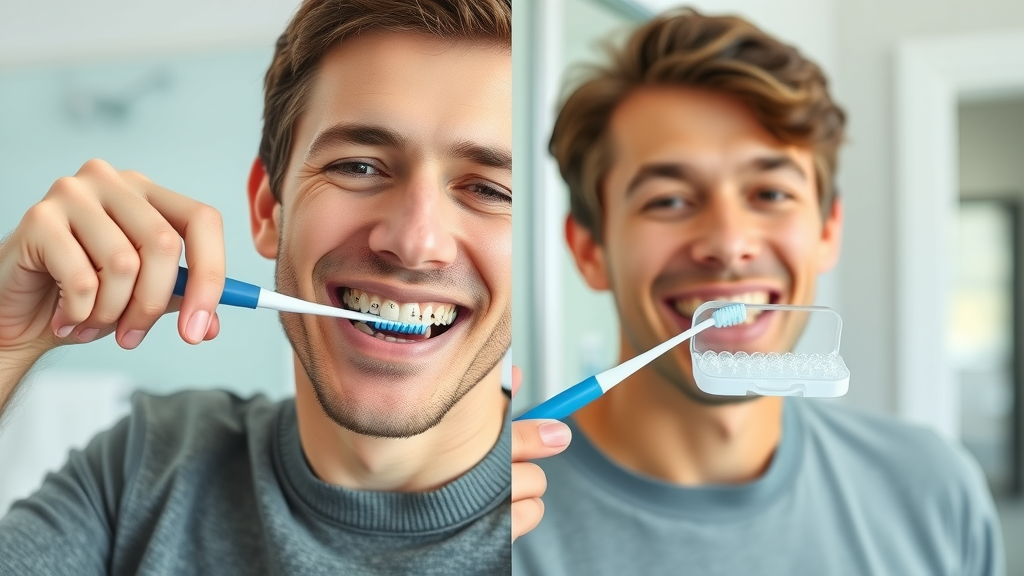
Are You Wondering If Braces or Aligners Are Right for You as an Adult?
Opening Hook: Can Choosing Between Braces and Aligners Really Change Your Self-Confidence, Savings, and Lifestyle as an Adult?
Have you ever wondered if your choice between braces and aligners could truly transform not only your smile, but also your self-assurance, bank account, and daily routine? For many adults, braces vs. aligners for adults: confidence, cost & convenience isn’t just a dental decision—it’s a life-changing one. Today, adults have more orthodontic treatment options than ever before, offering flexibility in cost, appearance, and effectiveness. Read on to discover practical insights, real-world experiences, and all the details you need to make an informed decision about your future smile.
What You'll Learn in This Guide to Braces vs. Aligners for Adults: Confidence, Cost & Convenience
- Key questions answered about orthodontic treatment, clear aligners, and traditional braces
- Overview of treatment plans, costs, and insurance coverage
- Practical comparisons for lifestyle, confidence, and oral hygiene
- Expert insights and real-world results for adults
Orthodontic Treatment Options for Adults: An Overview

Traditional Braces for Adults: Pros, Cons, and Key Facts
Traditional braces use metal brackets and wires to move teeth into the right places. They’re a time-tested solution for even the most complex cases, including tough bite issues or severe crowding. Traditional metal braces are bonded directly to your teeth and work 24 hours a day until the end of your treatment plan. They are generally less expensive than ceramic options or clear aligners, which is why some adults on a tighter budget still choose them. On the downside, they’re quite visible, and some adults find the look of metal braces challenging for confidence—especially in professional settings. Braces require regular adjustments and thorough dental cleaning, since oral hygiene takes extra effort with brackets and wires. Still, for adults who want results that work for almost any situation, traditional braces are hard to beat.
Advances in orthodontic treatments have led to smaller brackets and gentler wires, making modern metal braces more comfortable and less noticeable than before. Adults who choose them often benefit from predictable outcomes and fast (treatment time often being 18-24 months) progress for even tough shifts. More so, some dental insurance plans and payment plans make traditional braces financially accessible, especially when compared to newer alternatives. But it’s important to balance these benefits with increased attention to oral hygiene—as braces can trap food—and the visible metal components many adults find distracting.
Clear Aligners for Adults: How Do They Work?

Clear aligners, like Invisalign or similar brands, are virtually invisible trays made of medical-grade plastic. Powered by advanced technology, each clear aligner tray is custom-molded to fit snugly over your teeth, gradually shifting them into the desired position. Adults often love them because they are discrete—perfect for the boardroom or social events! Aligners require 20-22 hours a day of wear but can be removed for eating, brushing, and special moments, making them incredibly convenient for busy schedules and oral hygiene.
The process begins with a 3D scan or mold, from which a series of aligners is created to match each phase of your treatment plan. Most adults swap trays every 1-2 weeks, visiting the orthodontist less often than with traditional braces. However, clear aligners typically work best for mild to moderate orthodontic issues, such as minor crowding or mild bite problems. For more challenging complex cases, an orthodontist may recommend a hybrid approach, or traditional braces. Ultimately, clear aligners offer adults flexibility in daily life and are easier to keep clean, although they can sometimes be more expensive than metal braces—especially if you lose or damage trays.
Ceramic Braces, Metal Braces, and Other Alternatives
For those seeking something between the extremes, ceramic braces are a popular compromise. Created using clear or tooth-colored brackets, these braces blend in more than traditional metal braces, providing discretion while handling a wider range of orthodontic issues than aligners alone. Ceramic braces use the same technique as metal braces—brackets and wires—but with less shine or contrast against your natural teeth. However, they do tend to be more fragile and can stain easily if you’re not careful about oral hygiene and your diet.
Other alternatives might include lingual braces (bonded behind the teeth), or combination treatments where clear aligners work for most movements and braces are used strategically for challenging areas. Speak to your orthodontist to find out which treatment options are available and best suit your goals and lifestyle.
Braces vs. Aligners for Adults: Confidence, Appearance, and Social Impact
How Braces vs. Aligners Affect Adult Confidence
Choosing between braces and aligners can significantly impact adult confidence, both during and after treatment. Many adults report feeling self-conscious about visible metal braces, especially when interacting professionally or socially. This can sometimes lead to covering their smile, avoiding photos, or feeling less at ease in conversations. On the other hand, clear aligners offer a level of discretion that fits seamlessly into most adults’ lives, letting them maintain a natural look and avoid intrusive questions about their dental journey. After treatment, both options can produce dramatic increases in self-esteem—there’s simply no substitute for a straighter, healthier smile!
"Adults often cite self-esteem boosts after finishing clear aligner or traditional braces treatment." — Dr. Harper, Orthodontic Specialist
The biggest confidence shift happens at the end of a successful orthodontic treatment plan, when adults are able to smile freely and with pride. The journey there, however, can be smoother for those who value subtlety, as clear aligners offer a path with minimal disruption to daily appearance. Regardless of the choice, adults regularly confirm that the benefits to self-confidence far outweigh the temporary inconveniences along the way.
Choosing Discretion: Metal Braces, Ceramic Options, or Clear Aligners?

For many adults, discretion is a top concern. Metal braces are the most noticeable, but ceramic braces or even lingual (behind-the-teeth) options minimize the dental “hardware” effect. Clear aligners, however, stand out as the most inconspicuous solution, blending into daily professional and social life. The ability to remove aligners before important events—or when eating and drinking—empowers adults to maintain confidence without sacrificing orthodontic treatment effectiveness.
It’s also worth noting that ceramic braces and lingual options, while less visible, may still cause a slight lisp or minor discomfort at first. Clear aligners, being smooth and removable, generally avoid these side effects. In the end, your decision should balance appearance, comfort, and the nature of your orthodontic issues.
Testimonials: Real Adult Experiences with Braces and Aligners
Many adults share that starting with clear aligners made their journey less stressful and more empowering. Jane, a 38-year-old project manager, says, “I loved that my aligners were nearly invisible. Most colleagues never even noticed!” Meanwhile, Marcus, 44, chose metal braces for a significant bite correction and was surprised at how quickly he adjusted, “After a few weeks, they became part of my routine. The results were definitely worth it.” Like these experiences, real testimonies show there’s no single “right” answer—only the one that fits your goals and comfort best.
Braces vs. Aligners for Adults: Treatment Plans, Timing & Effectiveness
Comparing Treatment Times: How Long is the Journey?
Treatment time is often a deciding factor in the braces vs. aligners debate. For adults with mild to moderate orthodontic issues, clear aligners can sometimes finish in as little as six to 18 months. For more complex cases, traditional metal braces usually take between 18 and 30 months, depending on the specific bite issues and the need for precise, long-term movement. Your orthodontist will design a customized treatment plan based on your unique smile and needs, reviewed at each adjustment or set of aligners.
While clear aligners can be more rapid and convenient for simple cases, they depend on consistent compliance—patients must wear them 20-22 hours a day. Missed wear can prolong the whole process. Braces, while slower for some movements, work continuously and are fixed to your teeth, ensuring progress even when life gets busy. Regardless of your choice, clear aligner and braces treatments are more efficient than ever in 2024 thanks to digital planning and advanced materials.
| Treatment Option | Mild Cases | Moderate Cases | Complex Cases |
|---|---|---|---|
| Clear Aligners | 6-12 months | 12-18 months | 18-24+ months* |
| Traditional Metal Braces | 12-18 months | 18-24 months | 24-30+ months |
| Ceramic Braces | 12-18 months | 18-24 months | 24-30+ months |
| *Clear aligners may not be suitable for all complex bite issues and may require additional appliances. | |||
Which Orthodontic Treatment Is Better for Complex Bite Issues?

While clear aligners excel for many mild to moderate cases, more challenging bite issues or skeletal imbalances often need the predictable, continuous force of traditional metal braces. Braces are adept at handling rotated teeth, severe crowding, or complex jaw corrections, and allow orthodontists to use attachments or elastics for tricky movements. Although aligners have evolved and can now manage some complex cases via additional attachments or hybrid approaches, full correction of all problems often remains the domain of brackets and wires.
Your orthodontist’s expertise and digital planning will help determine if a hybrid treatment plan—combining aligners with a short period of braces—might give you a more ideal outcome. Whether your case calls for braces, aligners, or both, a thorough initial exam and honest conversation about goals is essential to make an informed decision.
Success Rates: Clear Aligners, Traditional Metal Braces, and More
Research shows that both clear aligners and traditional braces can produce highly successful results when used in the right cases and followed as prescribed. Adults who comply with aligner protocols—wearing trays the required hours a day and following the treatment plan—report satisfaction rates on par with traditional braces. Nevertheless, for cases demanding intricate or three-dimensional tooth movement, brackets and wires still provide unmatched control.
Most orthodontists agree the best outcomes come from a personalized approach: If aesthetics, comfort, and convenience are your top priorities, clear aligners might be your ideal choice. If you're facing tougher orthodontic issues or want the fastest possible fixes for complex cases, traditional metal braces or ceramic options offer peace of mind and precision.
Braces vs. Aligners for Adults: Cost Comparison and Transparent Payment Plans
Comparing the True Cost: Traditional Braces vs. Clear Aligners & Ceramic Braces

Cost is a crucial factor when deciding between braces vs. aligners for adults: confidence, cost & convenience. On average, traditional metal braces range from $3,000 to $7,000, while clear aligners typically range from $4,000 to $8,000, with some premium brands costing more. Ceramic braces usually fall between $4,500 and $8,500, partly due to the more expensive materials. The final price depends on the complexity of your case, local rates, the experience of your orthodontist, and whether additional appliances or treatment options are needed.
It’s important to consider “hidden” costs, too. For example, lost or damaged aligner trays can lead to extra charges, while ceramic braces may require more frequent visits. Ask about payment plans and compare insurance coverage carefully—many adults find cost becomes manageable with the right support.
What Impacts Cost? Customization, Case Complexity, and Orthodontist Choice
Several things determine how much you’ll actually pay for adult orthodontic treatment. First is case complexity: The more severe your orthodontic issues, the more work (and sometimes, appliances) will be needed. Second, customization—from high-end invisible trays to specialized brackets—influences the price tag. Third, your location, the orthodontist’s expertise, and even the technology used in your treatment plan play a role.
Finally, practice policies vary: Some offer inclusive packages (covering all visits, diagnostics, and retainers), while others bill separately for these items. Don’t forget to ask about available payment plans, discounts for paying in full, or flexible financing—these can make even advanced or combination treatments surprisingly affordable.
Payment Plans, Dental Insurance, and Insurance Cover for Adults
Many practices extend flexible payment plans to adult patients, breaking total costs into monthly payments. Some dental insurance plans also contribute to the cost of clear aligners or traditional braces. Coverage varies greatly by plan, and adults should always check insurance details, annual maximums, and whether their provider is “in-network.” While not everyone qualifies for the highest reimbursement, most adults are pleasantly surprised by insurance cover—especially if their case impacts dental health, function, or comfort.
"Many adults are surprised at their eligibility for affordable payment plans on orthodontic treatment." — Financial Coordinator, Local Practice
| Treatment Type | Total Cost Range | Insurance Contribution | Estimated Monthly Payment |
|---|---|---|---|
| Traditional Metal Braces | $3,000 – $7,000 | $1,000 – $3,000 | $100 – $250 (over 24-36 months) |
| Clear Aligners | $4,000 – $8,000 | $1,000 – $3,000 | $120 – $300 (over 24-36 months) |
| *Figures are estimates. Always review individual payment plans, dental insurance, and in-network providers for final figures. | |||
Braces vs. Aligners for Adults: Day-to-Day Convenience & Lifestyle Impact
Oral Hygiene and Daily Care: Which is Easier for Adults?

Oral hygiene is easier with clear aligners because trays are removed for brushing and flossing. You simply pop them out, follow your normal routine, and then pop them back in. With traditional metal braces, you’ll need to use special brushes, water flossers, and take extra time to clean around brackets and wires, as food gets trapped more easily. Poor hygiene can lead to gum problems or staining, making this a major consideration for busy adults.
Despite the convenience, aligners require discipline—they must be worn the right number of hours a day or treatment stalls. For adults committed to good hygiene, aligners offer the easiest way to maintain healthy teeth and gums throughout the process.
Eating, Social Life, and Professional Concerns with Braces and Aligners

One of the biggest perks of clear aligners is being able to eat anything you want—just remove the trays, enjoy your favorite foods, and pop them back in after. With braces, crunchy, sticky, or hard foods are usually off-limits to avoid damaging brackets and wires. Socially, aligners are also convenient: They allow you to smile confidently in photos, at events, or important work meetings, without drawing attention.
Professional adults, in particular, value the subtlety of aligners. For those frequently in the public eye or in customer-facing roles, aligners mean less distraction and worry over their appearance. Still, some adults have had positive experiences making braces a talking point or simply embracing the journey as part of their story!
Travel, Sports, and Special Occasions — What to Expect
"Clear aligners give adults the convenience of eating what they want and maintaining oral hygiene more easily." — Dr. Nguyen, Board-Certified Orthodontist
If you travel often, play sports, or attend special events, aligners usually provide the most flexibility. Just pack your next few trays and storage case, and keep up with routine. With braces, you may need extra supplies (wax, cleaning tools), and some contact sports require special mouthguards. Whether braces or aligners, modern orthodontic treatments are easier to blend into adult life than ever before—choose the option that aligns with your schedule and hobbies for the smoothest experience.
Who Should Choose Braces vs. Aligners for Adults: Is There a Best Option?
Best Choice for Mild to Moderate Orthodontic Issues
For adults with mild to moderate crowding or spacing problems, clear aligners are often the ideal solution. They’re quick, easy to clean, and nearly invisible—making them perfect for busy lifestyles and those who prioritize appearance. But remember: consistent wear (20-22 hours a day) is critical. If you’re good with routines and value convenience, aligners are likely the best treatment option.
Are Traditional Braces Best for Complex Cases?
Adults facing complex cases—severe bite issues, major movement, or skeletal corrections—will benefit most from traditional metal braces or sometimes ceramic braces. These systems offer superior control and force for challenging shifts, and can be combined with other appliances if necessary. Although these braces are more noticeable, the results for tough cases are often faster and more stable over the long run.
Adults and Teens: Shared Concerns and Unique Needs

Adults and teens share similar goals—healthy, straight teeth and increased confidence. However, adults bring unique priorities such as professional appearance, quick social adaptation, and insurance/financial considerations. Teens, on the other hand, may focus more on peer perceptions and, sometimes, compliance needs more parental supervision. No matter your age, today’s orthodontic treatment options are designed to accommodate every lifestyle, stage, and smile goal.
An experienced orthodontist can help tailor advice not just to age, but to the real-world demands you face daily: travel, meetings, sports, parenting, or even planning for big life events. This ensures that, whether you select clear aligners or traditional braces, you’ll achieve a result that suits every dimension of your life.
People Also Ask: Braces vs. Aligners for Adults
What is cheaper, aligners or braces?
Answer: The cost of aligners and braces depends on complexity, treatment provider, and insurance. Aligners can be similarly priced or sometimes costlier than traditional braces, depending on the region and specific case.
Why do people quit Invisalign?
Answer: Common reasons include discomfort, lifestyle challenges, unmet expectations, or lack of discipline in wearing aligners as prescribed. Understanding these risks can help set realistic goals.
How much is 3 months of Invisalign?
Answer: A 3-month treatment segment typically constitutes the early phase; costs vary widely but generally range from $1,000–$2,000 before insurance. Full treatment is generally more.
Do insurances pay for aligners?
Answer: Some dental insurances cover clear aligners like Invisalign, generally at the same level as traditional braces, but check individual plan details for specifics.
FAQs: Braces vs. Aligners for Adults
-
Are clear aligners as effective as traditional braces?
When used as indicated for mild to moderate orthodontic issues, clear aligners are highly effective and can deliver outstanding results. For complex cases or severe bite issues, traditional braces may be recommended. -
Can adults switch from metal braces to clear aligners?
Yes. In some cases, adults can start with metal braces for major tooth movement and finish with clear aligners for final adjustments. Discuss with your provider for the best treatment plan. -
Is there an age limit for orthodontic treatment plans?
No. Healthy teeth and gums are all that is required. Adults in their 40s, 50s, or beyond successfully complete orthodontic treatments every year. -
How do dietary and oral hygiene routines differ between options?
Braces require extra effort with oral hygiene and avoiding certain foods. Clear aligners are removed when eating and for cleaning, making hygiene routines more consistent with normal habits. -
What are common side effects?
Soreness, mild discomfort, and slight changes to speech are common with both braces and aligners at first. Pain usually fades quickly as you adjust. Aligners reduce the risk of mouth sores from wires or brackets.
Key Takeaways: Braces vs. Aligners for Adults — Confidence, Cost & Convenience in 2024
- Both braces and aligners offer successful outcomes with trade-offs in appearance, comfort, and convenience
- Treatment costs vary, but payment plans and insurance make adult orthodontic treatment more attainable
- No one-size-fits-all answer — consult a provider for a personalized orthodontic treatment plan
Conclusion: Navigating Braces vs. Aligners for Adults — What’s Your Next Move?

Your smile is worth it — and staying informed is the first step. Join hundreds of locals already following Grand Strand Smile Spotlight for updates, advice, and trusted care insights.
Subscribe now to get the latest Grand Strand orthodontic guides, tips, and updates — right to your inbox. No spam. Just smiles.
Want more expert-backed answers about braces, Invisalign, and local orthodontic care? Subscribe to Grand Strand Smile Spotlight and stay ahead of your smile journey.
How to Choose Between Braces and Aligners for Adults (Expert Panel)
When deciding between braces and aligners as an adult, it’s essential to consider factors like confidence, cost, and convenience. To assist you in making an informed choice, here are two authoritative resources that delve deeper into these aspects:
This article provides a comprehensive comparison between clear aligners and traditional braces, discussing comfort, effectiveness, maintenance, cost, and lifestyle considerations. It highlights that clear aligners are nearly invisible and comfortable, allowing easy cleaning and eating, while traditional braces are highly effective for correcting severe alignment issues. The piece also emphasizes the importance of patient compliance and the impact of each option on daily life.
This resource offers an in-depth look at the differences between Invisalign and traditional braces, covering aspects such as price, aesthetics, comfort, effectiveness, and treatment duration. It notes that while both options are effective, Invisalign is typically used for mild to moderate dental concerns and may be more aesthetically pleasing, whereas traditional braces are often preferable for more complex cases.
If you’re serious about choosing the right orthodontic treatment as an adult, these resources will provide you with valuable insights to guide your decision.
 Add Row
Add Row  Add
Add 




Write A Comment